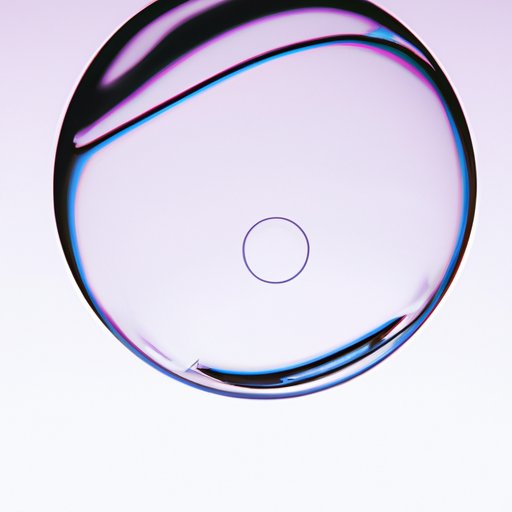
I. Introduction
Color is a fascinating concept that has intrigued scientists and artists alike for centuries. Many of us wonder whether color is a physical or chemical change, especially as we observe color changes in everyday life. In this article, we will explore the science behind color to help answer this question.
We’ll begin with an overview of physical and chemical changes before diving into the specifics of color in science. We’ll explore how we perceive color, as well as the science behind color changes in chemical reactions. We’ll also discuss the physical properties of color and common misconceptions about color and changes. By the end of this article, you’ll have a better understanding of the science behind color and whether it’s a physical or chemical change.
II. Overview of Physical and Chemical Changes
Before we dive into color, it’s important to understand what physical and chemical changes are. Physical changes are changes to a substance that involve its physical properties, like shape, size, or state of matter. Examples of physical changes include melting ice, boiling water, and cutting a piece of paper.
Chemical changes, on the other hand, involve the rearrangement of atoms or molecules in a substance. This often leads to the formation of new substances and changes in physical and chemical properties, like color, temperature, or smell. Examples of chemical changes include burning wood, digesting food, and rusting metal.
The main difference between physical and chemical changes is that physical changes do not involve a change in the substance’s chemical composition, while chemical changes do.
III. Exploring the Concept of Color in Science
Color is the visual perception of different wavelengths of light. The visible spectrum of light ranges from red to violet, with each color corresponding to a different wavelength. When light encounters an object, some wavelengths may be absorbed, while others may be reflected back and detected by our eyes. This is what gives objects their unique colors.
The color of an object depends on several factors, including the type of light it reflects, its surface properties, and any pigments or dyes that may be present. For example, a red apple appears red because it reflects red light and absorbs other colors.
Scientists study color in many fields, including physics, biology, and chemistry. They use specialized instruments to measure the wavelengths of light emitted or absorbed by different substances, as well as the properties of light that can affect color, like intensity and polarization.
IV. The Science Behind Color Perception
The human eye sees color through specialized cells called cones, which detect different wavelengths of light. There are three types of cones, each sensitive to different parts of the visible spectrum.
When light enters the eye, it activates the cones, which send signals to the brain. The brain then interprets these signals as different colors, depending on which cones are stimulated and to what extent. For example, a mixture of red and green light may be perceived as yellow, since it stimulates both the red and green cones.
Different wavelengths of light correspond to different colors, with red having the longest wavelength and violet the shortest. Colors can be combined in many ways to create new colors, which is the basis for all color media, like painting, printing, and digital displays.
V. Color Changes in Chemical Reactions
Chemicals can undergo chemical reactions that cause color changes. These changes often involve the formation or destruction of pigments or the absorption or emission of light by molecules. For example, the reaction between bleach and hair dye causes a color change by breaking down the dye molecules and destroying their colors.
Other examples of chemical reactions that cause color changes include the oxidation of metals, the combustion of organic matter, and the formation of crystals. Unlike physical changes, chemical changes involve the rearrangement of atoms or molecules, which changes the composition of the substance.

VI. The Physical Properties of Color
Color has physical properties that can affect temperature and energy. For example, dark-colored objects absorb more light and heat than light-colored objects, which is why wearing black clothes on a sunny day can be uncomfortable. Different colors can also affect our moods and emotions, which is why color psychology is a popular field of study.
Color has many practical applications in science and technology, from spectroscopy to LED lighting. By understanding how color works, scientists can develop new materials, study complex biological systems, and create stunning visual displays.
VII. Common Misconceptions About Color and Changes
One common misconception about color is that it is a physical change. While color changes can accompany physical changes, the color itself is usually a result of the object’s chemical composition or the way it interacts with light. Another misconception is that all color changes indicate a chemical change, which is not always the case. Sometimes, a color change can be a result of physical changes, like a change in temperature or pressure.
It’s important to understand the differences between physical and chemical changes and to avoid making assumptions about why and how color changes occur. By being aware of these misconceptions, we can better understand the complex science behind color.
VIII. Conclusion
In conclusion, color is not a physical change, but rather a result of the interaction between light and matter. Physical changes involve only a change in the physical properties of a substance, while chemical changes involve a rearrangement of atoms or molecules. Color changes can occur in both physical and chemical changes, but they are not indicative of either type of change.
By understanding the science behind color, we can appreciate its beauty and complexity. Whether we’re painting a picture, studying the properties of materials, or simply admiring the world around us, color plays an important role in our lives.




